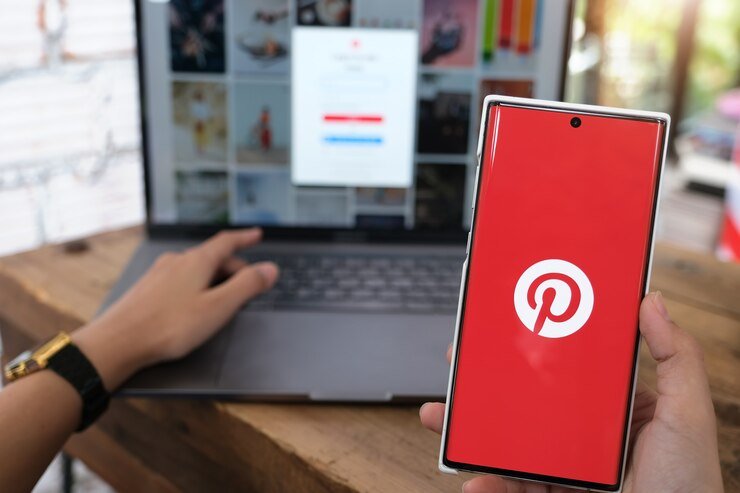
Pinterest is not just a platform for beautiful visuals and endless inspiration—it’s a powerful marketing tool that thrives on user interaction. One of the key behaviors that drives success on the platform is scrolling. Understanding how users scroll on Pinterest—and optimizing your content to grab attention during that scroll—can make a massive difference in your engagement, reach, and click-through rates.
In this article, you’ll learn how to master the scroll on Pinterest so your pins stop users in their tracks and turn casual scrollers into loyal followers or customers.
Why the Scroll Matters on Pinterest
Unlike traditional search engines, Pinterest offers an infinite scroll experience. This means users are constantly swiping down through a sea of pins, discovering new ideas, and making snap decisions about what to click, save, or ignore.
Here’s why understanding the scroll on Pinterest is crucial:
- Pins are judged in seconds. If your pin doesn’t grab attention immediately, it will be lost in the feed.
- Engagement happens mid-scroll. Users decide to repin, click, or visit your site as they scroll—often before even fully reading.
- Pinterest’s algorithm favors engaging content. The more users interact with your pins while scrolling, the more Pinterest promotes them to others.
In short, optimizing for the scroll means optimizing for more traffic, saves, and clicks.
Step 1: Create Scroll-Stopping Pins
To win the scroll, your pins must stand out—visually and contextually. Here’s how to design pins that make users pause and pay attention:
a. Use a Vertical Layout
Pinterest favors a 2:3 aspect ratio (1000 x 1500 pixels). Vertical pins take up more space in the feed, making them more noticeable as users scroll on Pinterest.
b. Bold and Clear Text Overlays
Use big, readable fonts with high contrast. Your headline should immediately tell the user what benefit they’ll get by clicking.
Example:
✅ “7 Ways to Decorate a Small Apartment on a Budget”
❌ “Interior Inspiration 2025”
c. Branded Colors and Fonts
Consistent branding helps you build recognition. When your audience sees familiar visual elements, they’re more likely to trust and engage with your content.
d. Add Subtle Motion (Optional)
Pinterest allows short video pins or subtle motion in Idea Pins. Movement naturally attracts the eye in a scrolling environment.
Step 2: Optimize the First 3 Seconds
You only have a few seconds to convince users to engage. Focus on:
- Clear Value: Tell them what they’ll learn or gain.
- Emotion: Use words or images that trigger curiosity, excitement, or inspiration.
- Urgency or Action: Phrases like “Must-Try,” “Don’t Miss,” or “Save This” boost clicks.
Always design your pin with the scrolling user in mind—someone who’s rapidly scanning, not deeply reading.
Step 3: Use Keyword-Rich Descriptions
Even though visuals dominate Pinterest, descriptions still matter—especially for SEO.
When a user pauses during the scroll, your description gives them context. Use relevant keywords, like:
- “How to get more engagement when people scroll on Pinterest”
- “Stop-the-scroll pin design tips”
- “Boost your reach as users scroll on Pinterest”
Also include a clear call-to-action, like: “Click to read more,” “Save for later,” or “Visit our site for the full guide.”
Step 4: Create Multiple Pins per Post
Different designs appeal to different users. Some may respond to a minimalist aesthetic, while others prefer bold colors or emotional headlines.
By creating multiple pin versions for the same URL or blog post, you increase your chances of catching a user’s eye during the scroll.
Try variations like:
- Different headline phrasing
- Alternate colors or layouts
- Image-only vs. text-heavy pins
Pinterest allows this and even encourages fresh content linking to the same destination.
Step 5: Post Consistently and at the Right Time
Pinterest’s algorithm rewards consistency. You don’t need to post hundreds of pins per day, but pinning daily (even just 5–10 pins) helps keep your content in circulation.
Best times to pin (generally):
- Evenings and weekends (when users are more active)
- Mid-morning during weekdays
You can use scheduling tools like Tailwind to plan your pinning strategy and ensure your pins show up when users are most likely to scroll on Pinterest.
Step 6: Analyze and Adapt
Once your pins are live, don’t forget to track what works and what doesn’t. Use Pinterest Analytics to monitor:
- Impressions (how often your pin was seen)
- Saves (indicating high visual appeal)
- Clicks (proving effective messaging and relevance)
If a pin has high impressions but low clicks, try updating the headline or CTA. If it has high engagement, create more pins in a similar style.
Engagement during the scroll on Pinterest tells you what resonates, so double down on those designs and topics.
Step 7: Leverage Idea Pins for Scroll-Based Engagement
Idea Pins are like Pinterest’s answer to Instagram Stories, but with a longer shelf life. They’re designed for user interaction within the scroll, and often appear at the top of Pinterest feeds.
Use Idea Pins to:
- Share mini-tutorials
- Showcase products or services
- Tell a story visually
They don’t link out, but they boost engagement, profile views, and followers, which all support long-term growth.
Final Thoughts
To succeed on Pinterest, you must think like your audience. They’re not reading word for word—they’re scrolling. Your job is to make them stop, notice, and take action.
By designing eye-catching pins, optimizing your messaging, and leveraging Pinterest’s built-in features, you can master the scroll on Pinterest and unlock massive engagement.
Remember: it only takes one powerful pin to change the game. So, start crafting pins that stop the scroll and start the conversation—because better engagement begins with that first second of attention.

